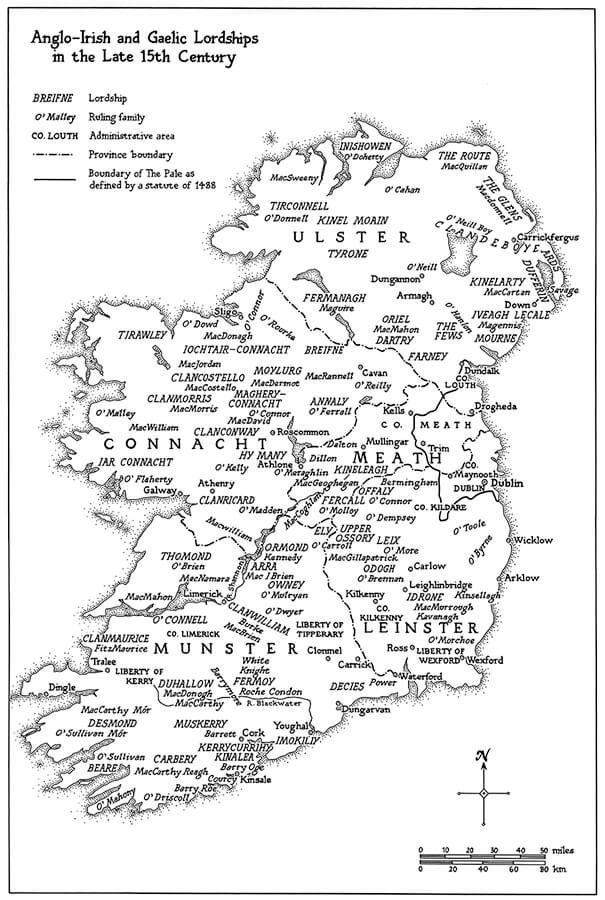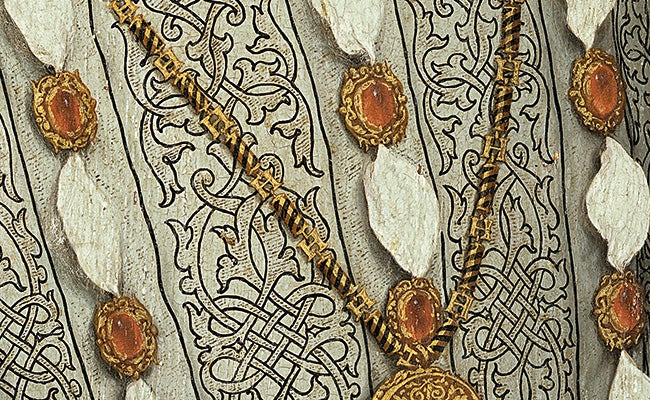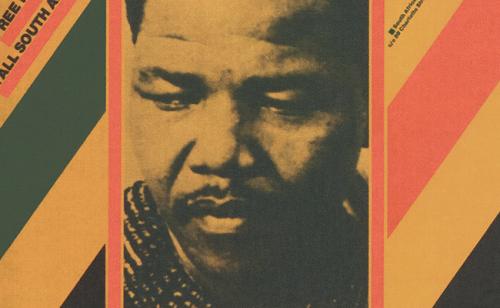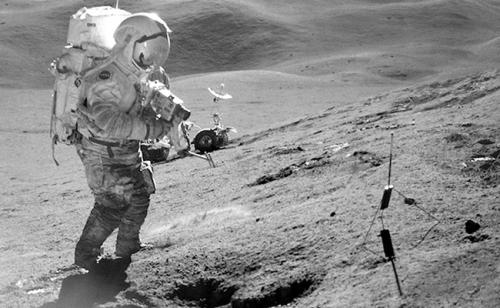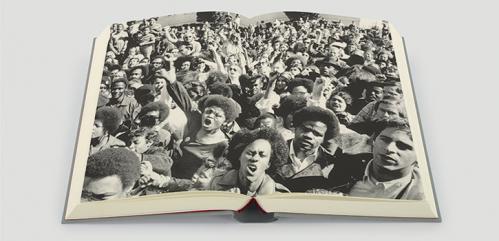This Folio Life: From Salamanca to Maynooth, the adventures of a Tudor portrait
Our new edition of The Tudor Age includes 20 full-colour portraits of some of the great figures of the era. Folio worked closely with author Susan Brigden to select the images, and here she tells the remarkable story behind one of her favourite portraits.
Once, in the far west of Ireland, I came upon two boys on ponies frisking around some standing stones. Their father, looking on, asked me why I was there. I told him that I had come to visit the castle at Dunboy. ‘Ah, that is the Wailing Wall of this part of Ireland,’ he replied. Local people know the tragic history of the siege of Dunboy and the massacre at Dursey island in the summer of 1602.
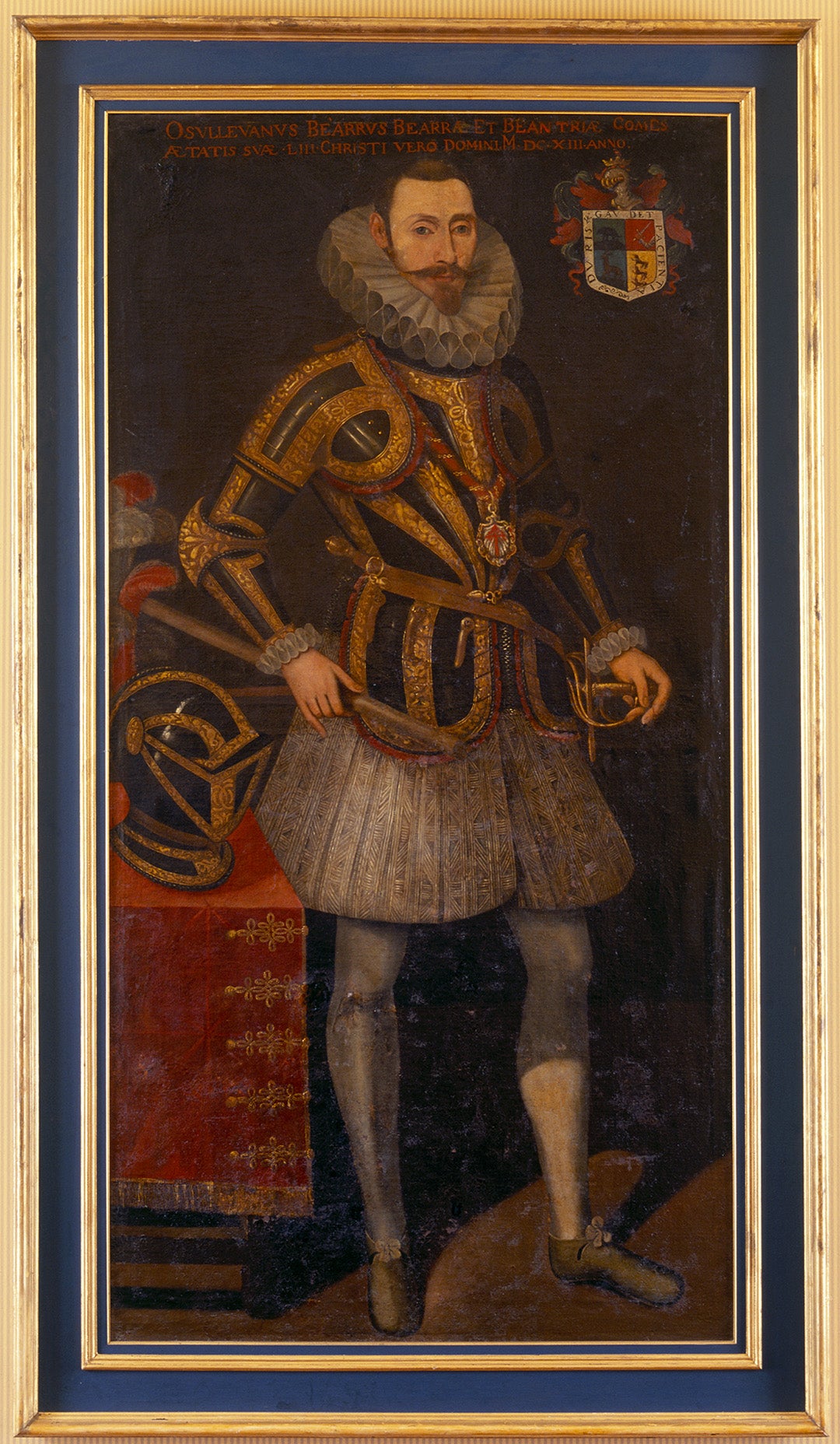
After the fall of Dunboy, its chief Dónal Cam O’Sullivan Beare, the O’Sullivan Beare, head of the Gaelic clan of O’Sullivan Beare, gathered his remaining followers and at the New Year of 1603 began a desperate midwinter march north, where he hoped to join the great northern Gaelic lords in their resistance to the English. Of a thousand followers all but thirty-five died or fled along the way. O’Sullivan Beare, like others of the Gaelic nobility of Ireland, fled to Spain to an exile from which he would never return.
In 1613, aged fifty-three, he was painted in Spain, in the guise of a Spanish grandee. His portrait bears the arms of the O’Sullivans, and his Irish title ‘Lord of Beara and Bantry’, but he was now also Knight of the Order of Santiago, and pensioner of the King of Spain, and more important in Spain than ever he had been in Ireland.
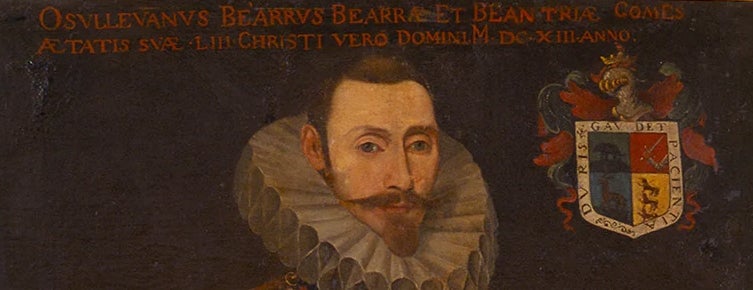
In July 1618, on the Plaza de Santo Domingo in Madrid, O’Sullivan Beare was murdered as he returned from mass, perhaps because he was preparing to lead a rising in Ireland. The portrait hung at the Irish College of Salamanca until its closure in 1950. Then the last Jesuit rector of St Patrick’s College, Maynooth, is said to have rolled it up and brought it to Maynooth on the back seat of his Volkswagen.
